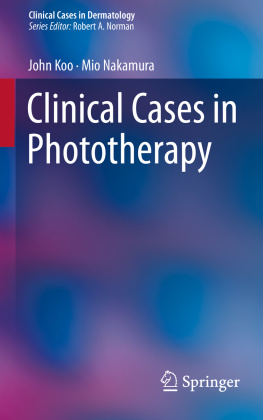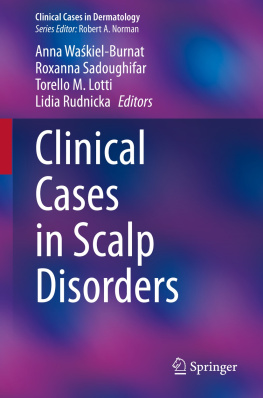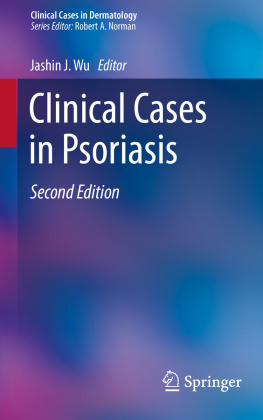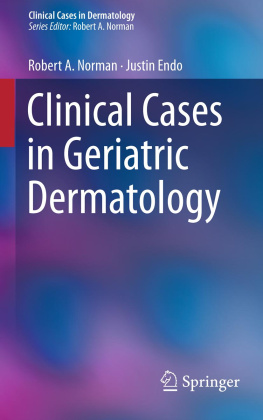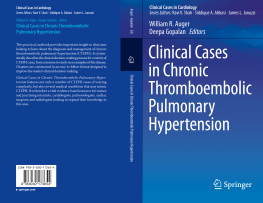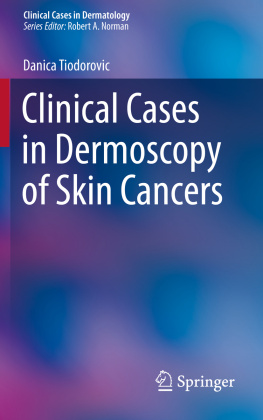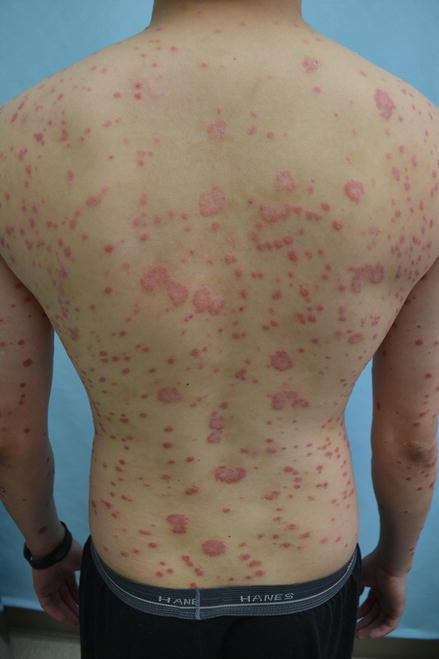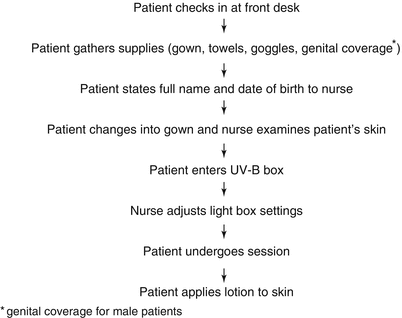Case
A 36-year-old male presents to your office for follow up for generalized psoriasis diagnosed 3 months ago. He has tried various topical corticosteroids and topical calcipotriene without much improvement. Not only is the topical regimen very time consuming and not very effective, but it has been nearly impossible for him to apply the topical medication to his entire body alone. He is otherwise healthy and denies history of photosensitizing disorders. He lives and works only a few blocks away from your office, which offers phototherapy.
On examination, the patient has well-demarcated, mildly erythematous and slightly indurated plaques with fine silvery scale scattered over his trunk and extremities consistent with partially-treated psoriasis (Fig. ). He is Fitzpatrick skin type II. You discuss the option of starting phototherapy, including the fact that he would need to come to the office 3 times per week for at least 3 months initially, followed by potential ongoing maintenance treatments once or twice weekly. You also discuss potential side effects of phototherapy including burning or erythema. After the discussion, the patient states he is ready to commit to phototherapy.
Figure 1.1
Patient with generalized psoriasis who is a candidate for phototherapy
Discussion
Phototherapy involves repeated exposure of the skin to ultraviolet (UV) light to treat various inflammatory skin conditions such as psoriasis, atopic dermatitis, and vitiligo. This practice is one of the oldest treatment modalities in dermatology, dating back to the ancient Egyptians who used natural light in combination with herbal extracts to treat skin disease [].
For psoriasis, phototherapy is indicated for patients whose disease does not adequately respond to topical medications or those who have generalized involvement that is not amenable to topical treatment alone (Fig. ].
Phototherapy is most commonly administered in the office setting in stand-up light booths (Fig. ].
Figure 1.2
A stand-up UVB phototherapy booth in the office setting
Table 1.1
University of California San Francisco Psoriasis and Skin Treatment Center NB-UVB initial dosing protocol
Skin type | Dose (mJ/cm2) | Subsequent increase (mJ/cm2) |
|---|
I | | 1550 |
II | | 1575 |
III | | 15100 |
IV | | 15150 |
V | | 15200 |
VI | | 15200 |
Table 1.2
University of California San Francisco Psoriasis and Skin Treatment Center BB-UVB initial dosing protocol
Skin type | Dose (mJ/cm2) | Subsequent increase (mJ/cm2) |
|---|
I | | 1050 |
II | | 1050 |
III | | 1050 |
IIII | | 1050 |
V | | 1075 |
VI | | 1075 |
Table 1.3
Missed treatment protocol for both NB-UVB and BB-UVB
Missed visit | Action (for all skin types) |
|---|
17 days | Increase dose per protocol |
811 days | Hold dose constant |
1220 days | Decrease by 25% |
2127 days | Decrease by 50% |
28 or more days | Restart with initial dose |
Figure 1.3
Flow of treatment for UVB phototherapy at the UCSF Phototherapy Unit
Table 1.4
Post-phototherapy skin care regimen
Bathe with mild soap or cleanser |
Shorten shower times |
Limit to one shower per day |
Use warm (not hot) water only |
Moisturize skin twice dailya |
aBest time to moisturize is immediately after bathing and immediately after phototherapy session
When patients present for phototherapy 3 times per week, approximately 6075% of patients with moderate to severe psoriasis achieve at least 75% improvement in the Psoriasis Area and Severity Index (PASI-75) by week 12 [).
Table 1.5
Side effects of UVB phototherapy
Side effect | Signs/symptoms |
|---|
Burning | Redness, tenderness, pain, tightness, itching, rarely blistering noticeable 46 h after treatment |
Photoaging | Coarseness, wrinkling, laxity, increased fragility, mottled pigmentation, telangiectasias, atrophic or fibrotic areas |
Tanning | Skin darkening |
Phototherapy is contraindicated in patients with photosensitizing diseases including systemic lupus erythematosus and xeroderma pigmentosum [).
Table 1.6
Recommended monitoring of patients undergoing UVB phototherapy
Baseline monitoring | Full body skin check before initiation of therapy |
Ongoing monitoring | Regular full skin examinations every 36 months to monitor for signs of photoaging, pigmentation, and cutaneous malignancies |
In the current patient with generalized psoriasis who is resistant to topical corticosteroids and topical calcipotriene, and given that the patients schedule and other logistics are feasible with 3-times per week phototherapy sessions, he is an excellent candidate for UVB phototherapy. Since the patient is skin type II, he should be started at a dose of 220 mJ/cm2 of NB-UVB (or 20 mJ/cm2 BB-UVB) and the dose should be increased by 1575 mJ/cm2 (or 1050 mJ/cm2 for BB-UVB) for subsequent sessions. Prior to each phototherapy session, in order to accurately determine the subsequent dose, the patient should be asked about any symptoms consistent with the side effect of burning, including skin pain, itching, or tightness. The skin should also be examined carefully for erythema, peeling, or blistering, in addition to assessment of disease improvement.

